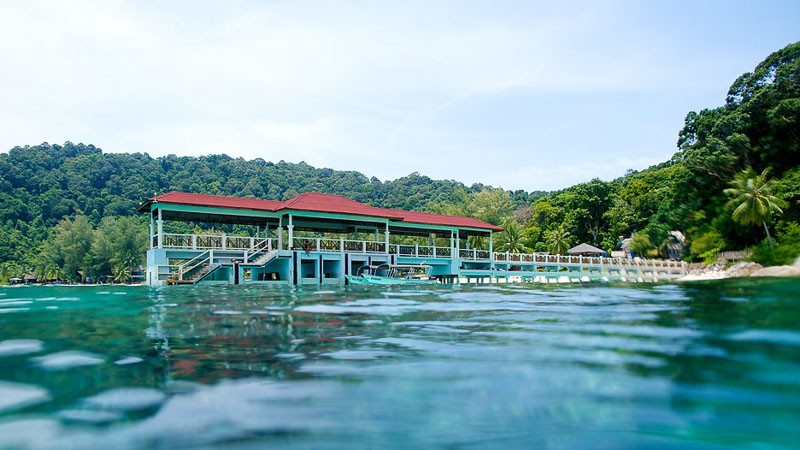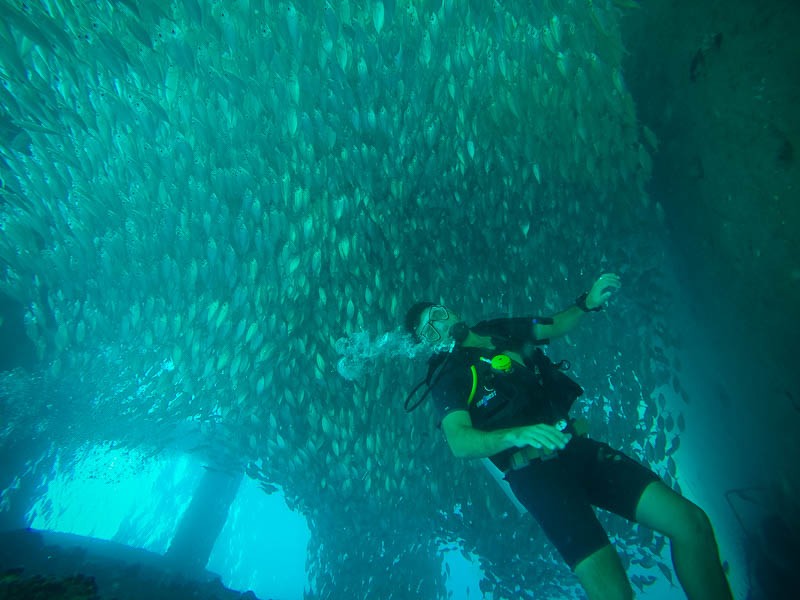Dive into Malaysia: The Best Diving Spots
With more than 4675 kilometres of coastline lined with white sandy beaches and crystal clear ocean, it’s no surprise that Malaysia is regarded as one of the top five scuba diving destinations in the world. The best dive sites are spread across Peninsular Malaysia and Malaysian Borneo, and while some are right on the tourist trail, plenty are secluded enough that you could have the whole reef to yourself.
If you’re a first time diver, Malaysia is also a great place to try it out or get your certification, and there are plenty of PADI schools around the country. Always dive with an accredited school to ensure a guaranteed level of safety; that you receive tuition from skilled dive masters, and the equipment is well maintained.
Here are three of the best regions for underwater exploration in Malaysia.
Diving in Sabah
Sabah makes up the lush northern tip of Malaysian Borneo and the state is a tropical paradise both in and out of the water. There are diving areas off both coasts, so there’s enough to keep you strapped to your regulator for weeks.
 Tunku Abdul Rahman Marine Park | Flanegan
Tunku Abdul Rahman Marine Park | Flanegan
Off the west coast, close to the capital Kota Kinabalu, is the Tunku Abdul Rahman Marine Park with its clear shallow waters, coral reefs and white sandy beaches. Currents tend to be mild, making it a great spot for first time divers, though there is plenty of diversity to entertain the more experienced.
On the opposite side of the island, on Sabah’s southeast coast, are Pulau Mabul and Pulau Sipadan, generally considered to be among the top 10 dive sites in the world. In the waters around the tiny Sipadan island you’ll find a 600-metre reef wall, labyrinthian limestone caves and hundreds of species of fish. Mabul is famous for muck diving – a type of diving on a soft, sediment ocean floor that is great for macro photography.
One of the best parts of the experience on this side of Sabah is the accommodation – many resorts are perched on stilts between the two islands and sit directly over the reef, so you can dive right off the jetty.
 Jack fish and Reef sharks in Sipadan | CC3.0 Avoini
Jack fish and Reef sharks in Sipadan | CC3.0 Avoini
Diving in Langkawi
Langkawi is Malaysia’s original paradise island and has been popular with local and international holidaymakers since the 1970s. There are 99 islands in the Langkawi archipelago, made up of dramatic limestone rock formations, lush green rainforests and secluded beaches. And the scenery is just as stunning below the water’s surface.
 Tourism Malaysia
Tourism Malaysia
Divers should head straight to Pulau Payar Marine Park – the only marine park on the west coast of Peninsular Malaysia. The park comprises of four uninhabited islands – Payar, Lembu, Kaca and Segantang – and is rich with colourful and exotic marine life. The most popular dive site in the park is the Coral Garden, said to have the widest variety of corals in the country.
Here you’ll come face to face with lobsters, black-tip sharks, lionfish, moray eels, clown fish and groupers, all swimming above the carpet of shellfish and seashells that blanket the sandy ocean floor. At the south end of Pulau Payar is Grouper Farm, which is said to have the clearest water of all the reefs in the park because of a low current. The reef is 15 metres deep and swarming with groupers, jacks, snapper and the occasional barracuda.
Diving on the Malaysian East Coast
 The rugged east coast of Peninsular Malaysia is still a quiet, traditional region of untouched fishing villages, white sandy beaches and picture perfect islands. From the twin Perhentian Islands in the north down to the tiny, ‘roadless’ Pulau Tioman in the south (that featured in the 1958 movie South Pacific as the fabled Bali Hai), there are clusters of secluded islands to explore.
The rugged east coast of Peninsular Malaysia is still a quiet, traditional region of untouched fishing villages, white sandy beaches and picture perfect islands. From the twin Perhentian Islands in the north down to the tiny, ‘roadless’ Pulau Tioman in the south (that featured in the 1958 movie South Pacific as the fabled Bali Hai), there are clusters of secluded islands to explore.
 Pulau Perhentian
Pulau Perhentian
 Diving in Salang, Pulau Tioman | The Travel Manuel
Diving in Salang, Pulau Tioman | The Travel Manuel
Most of the major island groups off the coast are surrounded by marine parks, so the waters are protected and fishing is illegal. This means perfect conditions for divers with crystal clear water, healthy reef systems and abundant marine life.
Experienced divers should try Tenggol, around 20 nautical miles off the coast from the mainland and easily accessible in a day trip. There are more than 20 dive sites, though be warned that currents can be strong.
Fish, sharks and turtles abound, and at the beginning and end of the season divers can be lucky enough to see manta rays and whale sharks on their migration. Despite the world-class diving, Tenggol is largely unknown and it’s likely there will only be one group at any dive site at one time.
This region of Malaysia essentially shuts down during the wet season and visibility is all but zero, so make sure to visit between March and October.
 Diving in Pulau Tioman | Paul
Diving in Pulau Tioman | Paul Corals in Pulau Tioman | The Travel Manuel
Corals in Pulau Tioman | The Travel Manuel
Image Credits: Tourism Media, Images licensed under Creative Commons 2.5 License